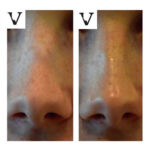Prizmatem is a term that’s beginning to gain attention in educational, design, and tech circles. While the word itself may not yet be widely known, it suggests a combination of “prism” and “system” or “mathematics,” hinting at a visual, interactive, and multifaceted approach to learning.
Prizmatem is best understood as a visual learning method or platform that uses prism-based models, augmented visuals, or modular systems to enhance education and cognitive engagement. Whether it’s used in classrooms, creative design, or cognitive therapy, prizmatem appears to be part of a growing trend: making abstract concepts visible and tangible.
The Concept Behind Prizmatem
Learning Through Light, Shape, and Structure
The term “prizmatem” evokes images of light passing through a prism, breaking into various colors and directions. In an educational context, this symbolizes:
-
Breaking down complex ideas into simpler parts
-
Presenting information from multiple angles
-
Engaging different types of learners through color, shape, and interaction
By leveraging this metaphor, prizmatem encourages multi-sensory learning—combining visual, tactile, and sometimes digital elements.
Potential Applications of Prizmatem
1. STEM Education
In science and mathematics, visualization is key. Priz matem may refer to systems or kits that use 3D prism shapes, transparent models, and interactive displays to help students understand:
-
Geometry and spatial reasoning
-
Light and refraction
-
Molecular structures
-
Data visualization
These tools are ideal for hands-on learners and students who struggle with abstract theory.
2. Augmented Reality Learning
Some interpretations of prize matem include AR or VR platforms that allow students to explore educational content through virtual prisms, overlays, or rotating diagrams.
In this case, prizmatem could be part of:
-
AR-enabled textbooks
-
Interactive science labs
-
Virtual field trips using geometric layers or prism overlays
This brings learning to life by letting students interact with 3D models in real time.
3. Design and Architecture Tools
In creative fields like graphic design, 3D modeling, or architecture, priz-matem may refer to a framework for designing with light, form, and mathematical balance. Imagine:
-
Modular building tools
-
Color theory design kits
-
CAD software extensions based on prism structures
Such tools could help designers simulate light behavior, create visually harmonious compositions, or explore multi-surface symmetry.
Features of a Prizmatem-Based System
While the exact form may vary, here are common features found in priz-matem-style platforms:
Visual Breakdown of Concepts
Use of color-coded diagrams, transparent prisms, or holographic images to deconstruct and analyze information.
Modular Learning Units
Topics are divided into interlocking parts—like facets of a prism—so students can explore ideas in layers.
Interactive Tools
Whether physical or digital, priz-matem often includes tools students can manipulate to better understand angles, shapes, or processes.
Real-Time Feedback
In AR or software-based systems, students might receive immediate responses to their actions, improving retention and engagement.
Benefits of Prizmatem in Education
Enhances Visual and Spatial Intelligence
For students who think better in pictures than in words, priz-matem makes abstract ideas clearer and easier to retain.
Supports Multi-Sensory Learning
Combining touch, sight, and movement, priz-matem appeals to kinesthetic learners and those with learning differences.
Encourages Active Participation
Instead of passively listening, learners interact, explore, and test hypotheses, making learning more memorable.
Bridges the Gap Between Art and Science
Priz-matem blends aesthetic design with scientific principles, making it ideal for STEAM (Science, Technology, Engineering, Art, Math) programs.
Is Prizmatem a Product, Platform, or Philosophy?
Depending on its use, prizmatem could refer to:
-
A physical educational product (like a STEM toy or kit)
-
A digital learning platform using prisms and geometry in teaching tools
-
A teaching method or curriculum style that emphasizes a visual breakdown of content
-
A design framework combining light, symmetry, and structure
This flexibility makes prizmatem an adaptive concept that can be applied in diverse settings.
Who Can Benefit from Prizmatem?
Educators
Teachers seeking engaging ways to teach geometry, physics, or design will find priz-matem-based tools helpful for both group and individual activities.
Students
Learners at all levels—especially visual thinkers and neurodivergent students—benefit from the layered, interactive approach of prizmatem.
Designers and Engineers
Those working in technical or creative fields can use prizmatem structures to visualize models, simulate real-world behaviors, and optimize design concepts.
Therapists and Specialists
Cognitive therapy programs may adopt prizmatem tools to support memory, sequencing, and spatial recognition exercises.
The Future of Prizmatem
As education and design move toward more interactive, visually immersive formats, concepts like prizmatem are likely to grow. In the future, we may see:
-
Prizmatem apps integrated into classrooms
-
Holographic teaching aids based on prism science
-
Cross-disciplinary collaborations between math, art, and computer science
As digital education evolves, prizmatem could help reshape how we teach, learn, and imagine.
Conclusion: Why Prizmatem Matters
In a world where information is often overwhelming and abstract, prizmatem offers a refreshing way to bring learning into focus—literally. Whether through physical kits, digital apps, or teaching strategies, it presents knowledge in a structured, colorful, and multi-dimensional format.
By embracing prizmatem, educators, students, and creators alike can explore the intersection of light, logic, and learning, proving that sometimes, the clearest path to understanding is through a prism.







